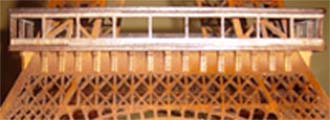
www.finescrollsaw.com
The Eiffel Tower
 |
The Eiffel Tower was the engineering landmark of the 1889 International Exhibition celebrated in Paris to commemorate the 100th anniversary of the French revolution. It was designed by Gustav Eiffel and his assistants. The tower was not accepted at all by many, who complained its construction. The Eiffel tower is presently among the best well-known monuments in the world. I have designed this pattern with one purpose in mind: the model should replicate the original as it is today to the highest possible degree. To achieve this I have used the original drawings by Eiffel himself and I have studied dozens of pictures of the tower. I have measured the angles, heights and widths of every section and I have carefully used these measures in the design. Finally, I have reproduced the framework of the sides with the only limitation of the wood width to be used. |
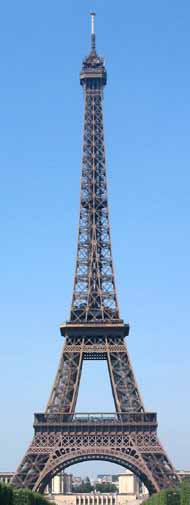 |
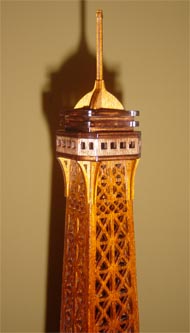 |
|
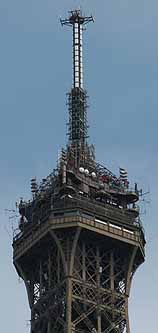 |
| The result is an accurate wooden model of the real Eiffel tower. It heights about 100 cm (about 40 inches) but it can be resized at will. | ||
|
|
|
In this section I show you more pictures of the Eiffel tower along with several pictures taken during its construction. These pictures do not intend to be an exhaustive account or complete instructions, just some comments that can be of interest. |
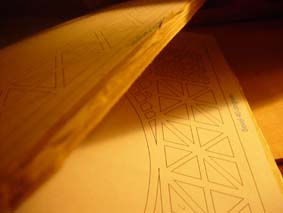 |
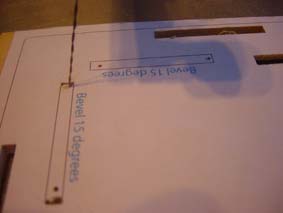 |
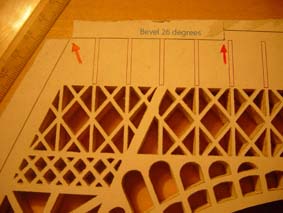 |
|
I use masking tape to transfer the pattern to the wood. It sticks strongly to the wood. Once the piece of wood is covered with the masking tape you can glue the pattern to the masking tape and proceed to cut the pieces. The wood used is 4 mm Baltic birch plywood. I have stacked in groups of two. The stacked pieces are just glued in the sides. |
The slots of the floors of the tower must be beveled in a particular way: the short sides are not beveled and the long sides are beveled in the same direction. To achieve this, both extremes of the slot are cut in first place with a round blade. With the round blades the extremes can be cut without turning the piece, which is maintained at the desired bevel angle. Using a flat blade, the two long sides are then cut both of them in the same direction. |
Stacked pieces need to be separated before scrolling their beveled sides. Before separating them we make small marks with the blade. |
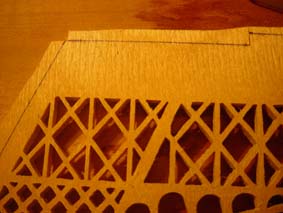 |
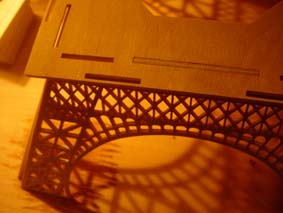 |
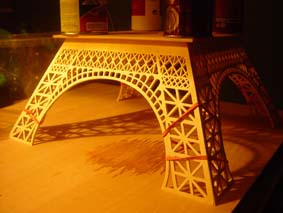 |
|
We then separate them, and using a ruler, we complete the shape of the piece or pieces below the main one. We then proceed to scroll all the beveled sides. This method is not valid for those sides of the pieces that are not straight lines. We'll see an example of such situation later. |
The pieces of the first section are done and we check they fit well. The inclined sides encase exactly in the beveled slots so we simply have to glue them in position without further concern. |
We firstly glue the four sides to their roof and let dry. Then we glue the corners one by one and hold them in position with elastic bands. |
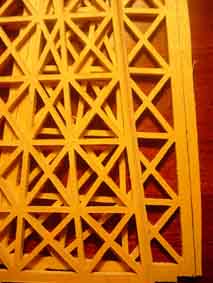 |
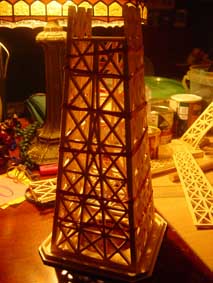 |
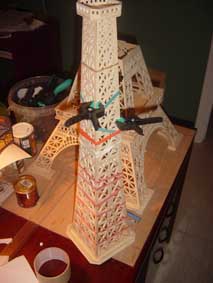 |
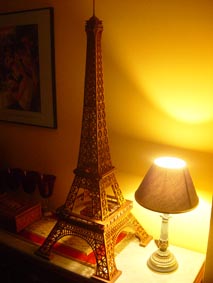 |
|
The sides of the pieces corresponding to the third section of the tower are slightly curved. Once we have made all the inner cuts and the outside non beveled cuts we separate the stacked pieces, we finish the first piece and we use it as a pattern to draw the beveled sides with a pen in the second piece. We then finish the second piece normally. |
To glue the four sides of the first part of the third section we insert these sides in their base, apply glue and hold them in position with welts until they dry. We then glue the inside piece of this section. We proceed in the same manner with the second part of this section. |
We then glue these two parts together to form the third section. We hold both pieces with welts as before. They fit with precision, the juncture is very difficult to notice. The corners are sanded slightly to give them a smooth aspect. The project is then mounted and finished as you prefer. A few pictures of the finished project follow. |
The finished project calls the attention of everyone. |
|
Please note that this pattern is registered and copyrighted. If you would like to have it I offer it for 19 € plus shipping. The pattern is computer made, which provides total precision, and nicely printed for convenient scrolling. I have two versions of this pattern. The standard size of the USA version uses 1/4 and 1/8 inches wood. Of course it can be scaled up or down. These are some of the possible scales and the corresponding measures for the model using the USA version of the pattern:
Take into account that scaling up the model out of the usual sizes of a scroll saw project will require the use of techniques beyond the standard scroll saw techniques, like cutting and mounting very large pieces, strengthening the project, etc. The standard size of the European version of the model uses 4 mm wood. This version can also be interesting for someone in the USA mainly if you would like to use only one wood thickness. To use the typical wood thickness in the USA the European version of the patterns need to be scaled up or down. These are some of the possible scales and the corresponding measures of the model using the European version of the pattern:
Write me to info@finescrollsaw.com for any questions or to buy this pattern. |
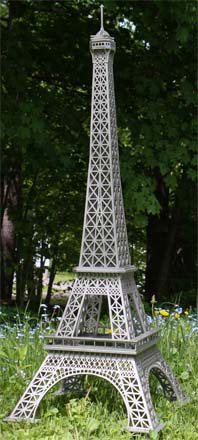 |
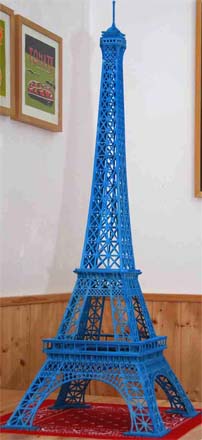 |
|
|
| This picture has kindly been sent by Paul Lerley from Augusta, Maine, USA. | This picture has kindly been sent by Wolfgang Roth from Germany. |
Eiffel Tower by Jose María Beltrán from Spain. |
Eiffel Tower transformed into an original clock by George Allen from Tennessee, USA. Clock modification available from him at gallen4@bellsouth.net. |
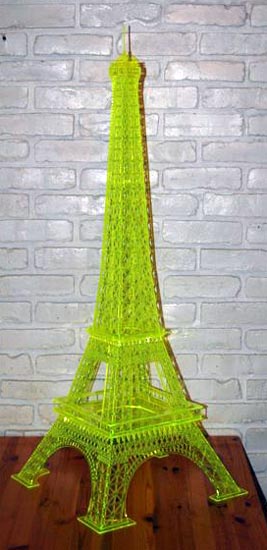 |
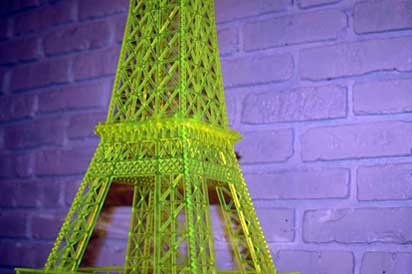 |
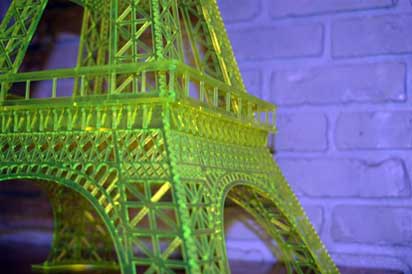 |
|
|
Striking Eiffel Tower made in fluorescent green acrylic with a laser by Guy Hilliard from Canada. |
|
|
These three pictures show the Eiffel tower made with gingerbread. They are courtesy of Chef Toni Lynn Dickinson & Chef Joseph Jae Kim, both instructors of The French Culinary Institute in New York City, USA. It is five feet tall and took them nine days to make. It looks really really tasty!!! |
|
|
|
|
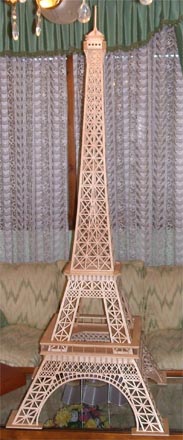 |
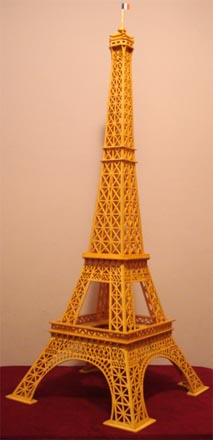 |
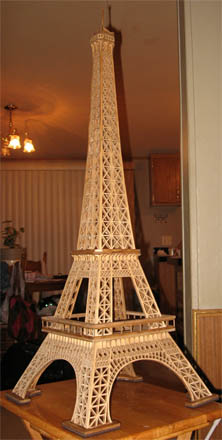 |
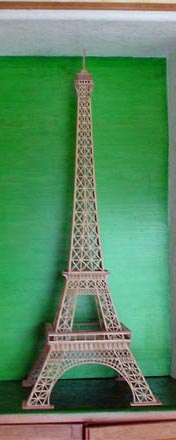 |
|
Eiffel Tower by Carlos Martín from Quintanilla de Onésimo, Valladolid, Spain. |
This picture has been sent by Santiago Fernandez from Barcelona, Spain. | This picture has been sent by Robert D. Rose from the USA. |
Eiffel Tower by Daniel Navarre from France. It is entirely made with a hand saw in around one month of work. |
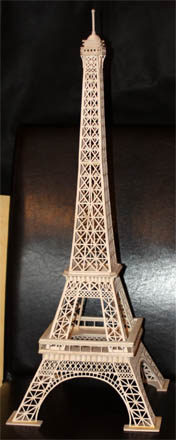 |
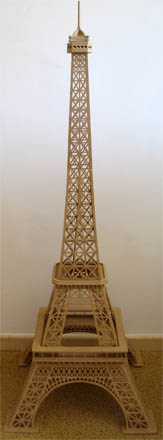 |
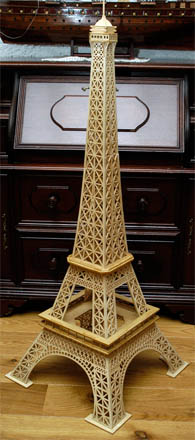 |
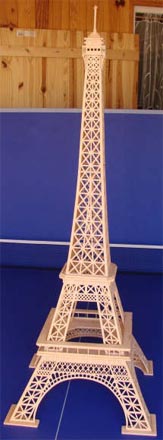 |
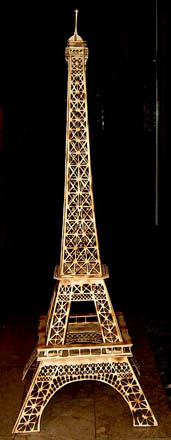 |
| This picture has been sent by Gérard Vancaillie from Schaerbeek, Belgium. |
Eiffel Tower by Jaap Dijkema from The Netherlands. |
Eiffel Tower by Martien van Der Els from The Netherlands. |
This picture is courtesy of Francisco Gómez from Palma de Mallorca (Spain). |
Eiffel Tower by Giuseppe Cucchiara from Italy. |
| The following pictures have kindly been sent by John Hobson from Canada. | ||
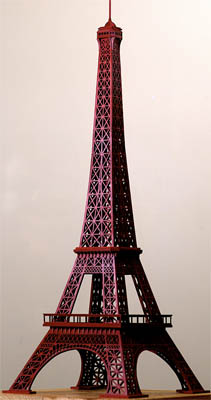 |
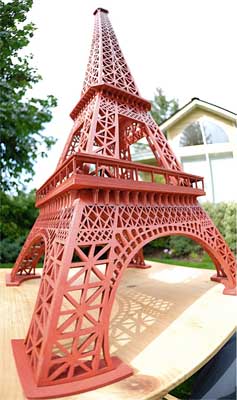 |
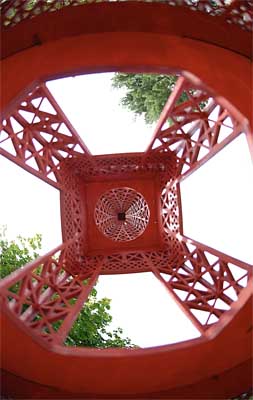 |
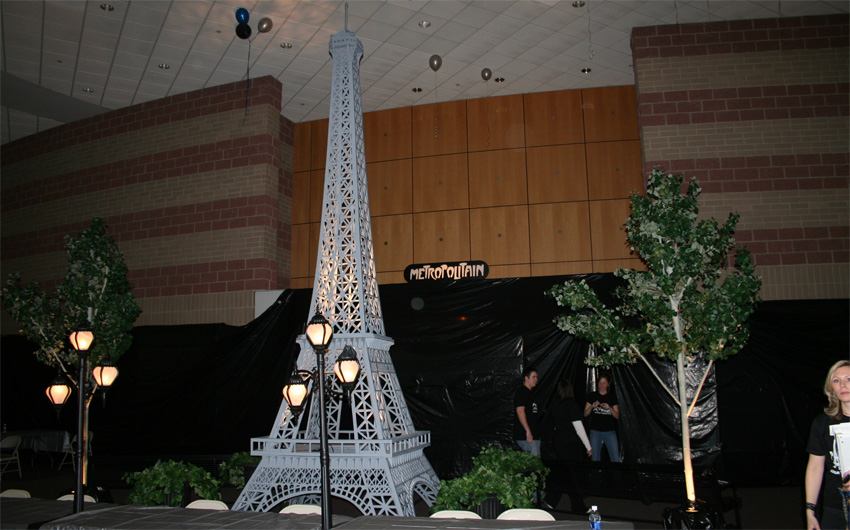 |
|
This is an amazing picture I have received from Patrick Schneider from the USA. He has made a 20 feet Eiffel Tower. He wrote me: ¨ I just completed a 20 feet tall version of your Eiffel Tower model as a prop for a dance at a high school, so it can definitely be scaled up. I built it using a jigsaw (rather than a scroll saw). I made it out of 3/4 inch and 1/2 inch plywood and, while I had to modify your plans a very little bit (a little bracing here and there), I largely stuck to your plans. It turned out great! Everyone at the school was amazed. I couldn't have done it without your plans. Thank you so much.¨ Observe the people compared to the tower! |
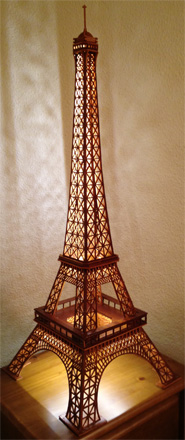 |
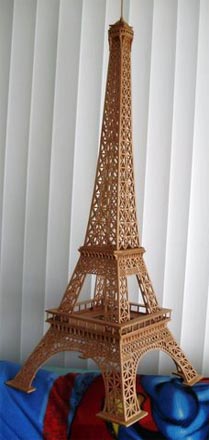 |
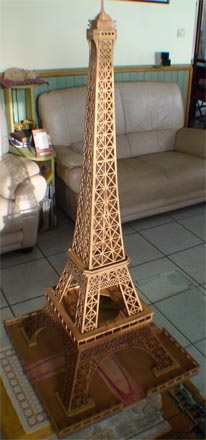 |
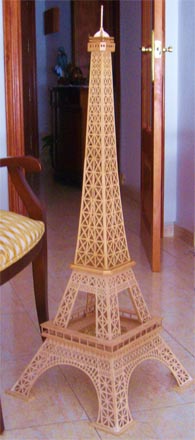 |
| This picture has been sent by Aleandro Hernandez from Amposta, Tarragona. | This picture has been sent by André Disnard from Saint-Pierre et Miquelon. | This picture has been sent by Ary Cadet from France (Reunion island). |
Eiffel Tower by Salvador Puig from Spain. |
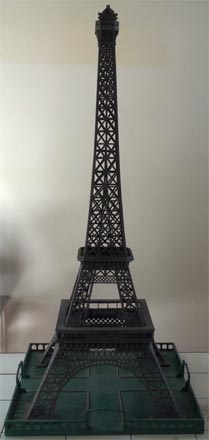 |
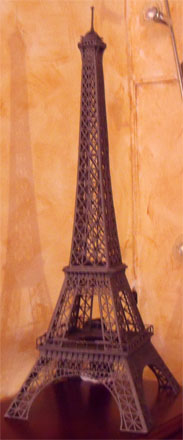 |
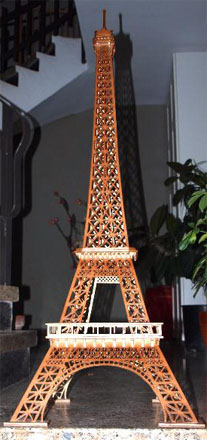 |
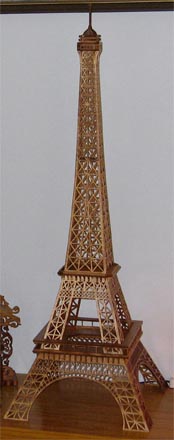 |
| This picture has been sent by Ary Cadet from France (Reunion island). | This picture has been sent by Luigi and Andrea Cassani from Italy. | This picture has been sent by Francisco Domingo Fabre from Barcelona, Spain. | This picture has been sent by Noel Gibbs from Australia. |
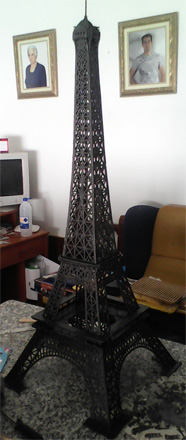 |
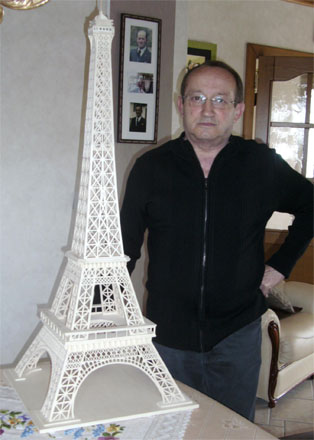 |
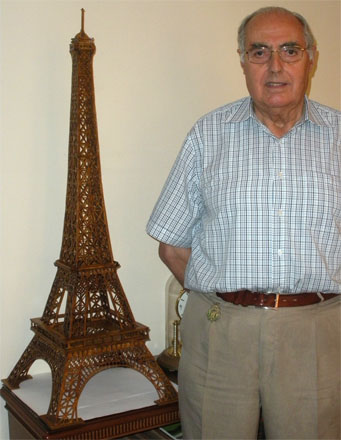 |
| This picture has been sent by Antonio Serrano from Córdoba, Spain. | This picture has been sent by Laurent Neu from France. | This picture has been sent by Diego Herrera Bellido from Jerez de la Frontera, Spain. |
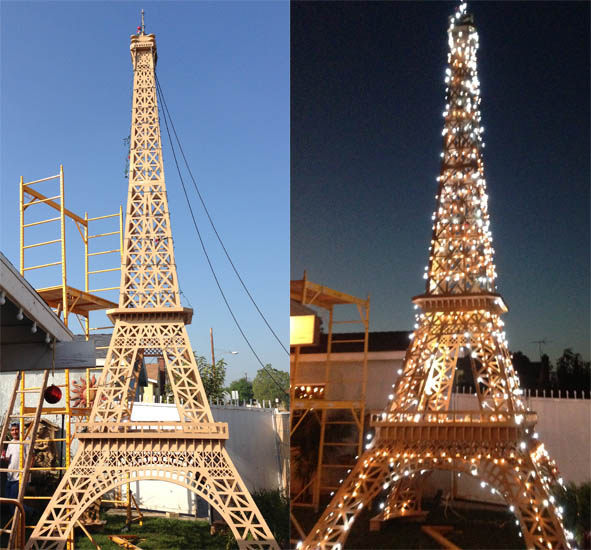 |
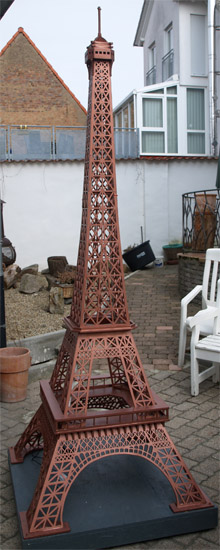 |
|
These pictures have been sent by Emir Hernandez from Montebello, California: ¨ Here you have pictures of a 25 feet Eiffel Tower made by 1/2 inch plywood for a French themed party, it was sensational, the only thing I modified is the top part so it would be more visible, other than that the tower is a hit! Everyone can see it from the street. I thank you so much, couldn't have done it without your plans.¨ |
This picture has been sent by Bernd Mohr from Germany. The height of this tower is 2,50 meters. |
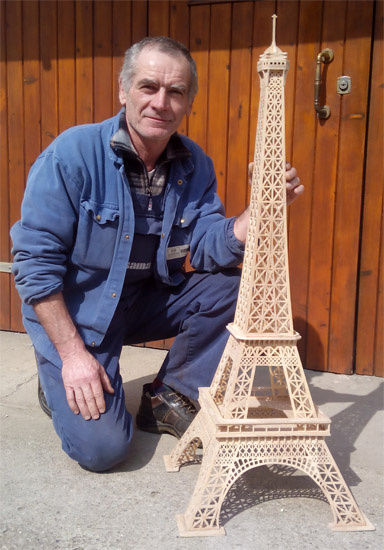 |
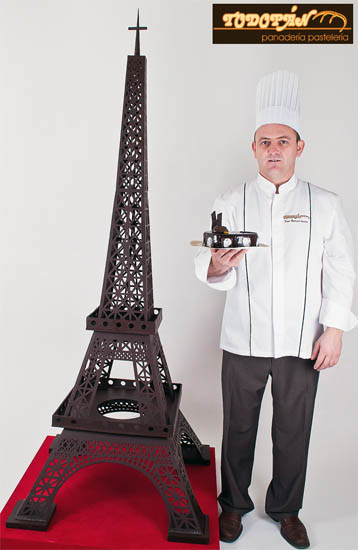 |
| This picture has been sent by Gaetano Lavezzo from Italy. |
This picture has been sent by Juan Manuel García Sánchez from Caravaca de la Cruz, Murcia, Spain: ¨Here is the Eiffel tower made with 40 kg. of chocolate, without any supporting structure. It heights 2.10 meters (6.4 feet) and it is 1 cm thick (a bit less than 1/2 inch). It took 120 hours to make.¨ |
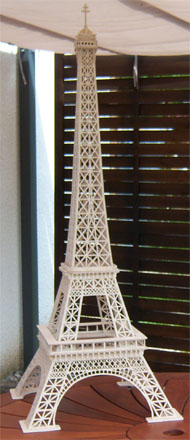 |
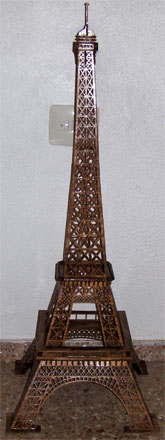 |
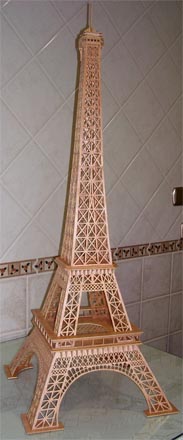 |
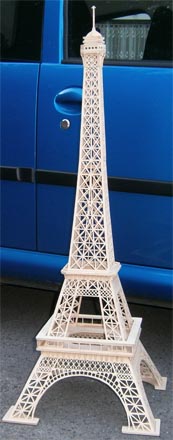 |
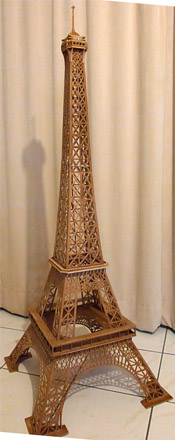 |
| This picture has been sent by Gaston Varoqui from France. | This picture has been sent by Bruno Carceller from Cantavieja, Teruel, Spain. | This two picture has been sent by Antonio Valadés Flores from Don Benito, Spain. | This picture has been sent by Christian Giot from Belgium. | This picture has been sent by Joel Fonteneau from France. |
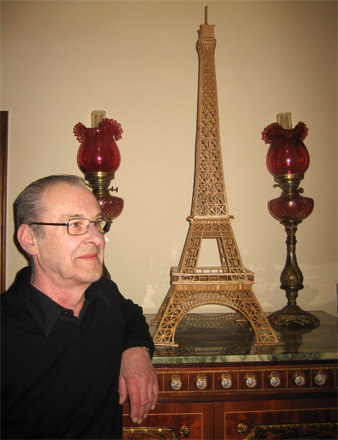 |
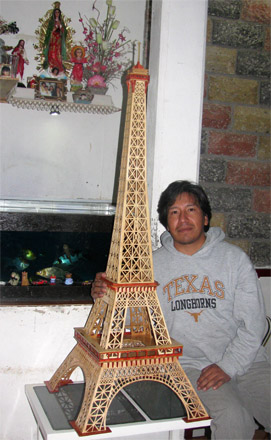 |
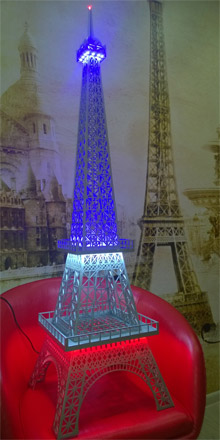 |
|
This picture has been sent by De Bruyne Marnix from Belgium. |
This picture has been sent by Raul Linares from Mexico. | This picture has been sent by Pavel Markov from Ukraine. |
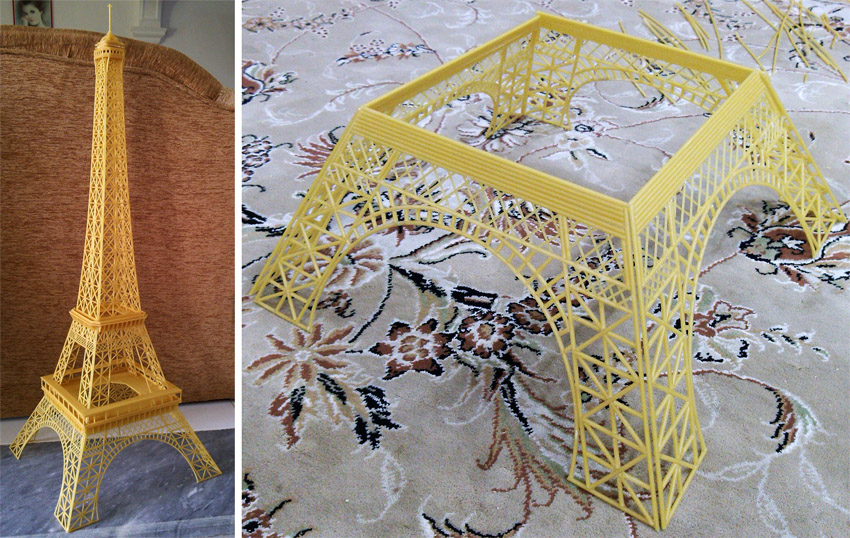 |
|
This picture has been sent by Ali Ajami from Iran. It shows the model of the Eiffel Tower made with spaghetti. |
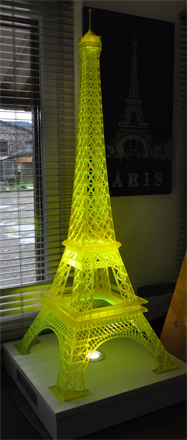 |
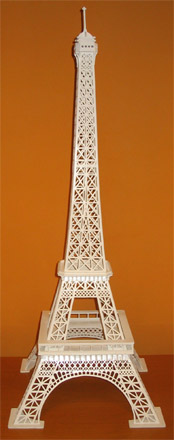 |
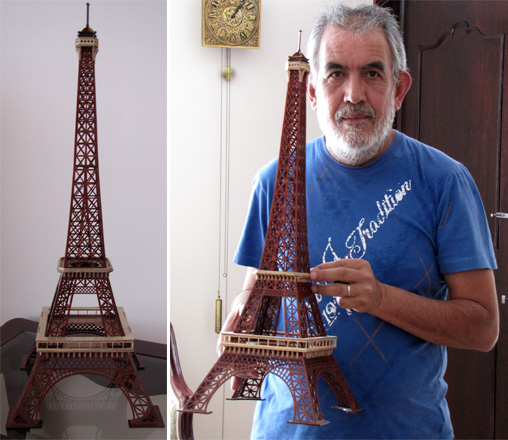 |
| This picture has been sent by Remy Munsch from France. |
This picture has been sent by Mirco Ormelini from Italy. |
These pictures have been sent by Jose Luis Tellez from Celaya (Guanajuato, Mexico). |
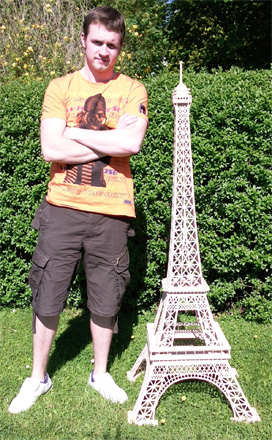 |
|
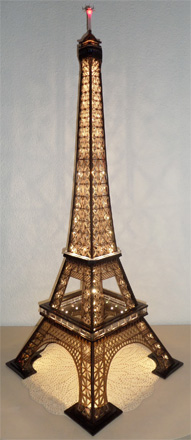 |
|
This picture has been sent by Klaus Langemann from Germany. |
This picture has been sent by Federico Carrasco from Chile. | This picture has been sent by Emil Schmid from Switzerland. |
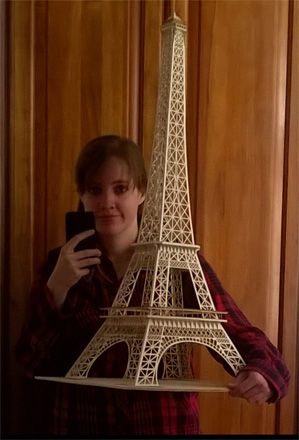 |
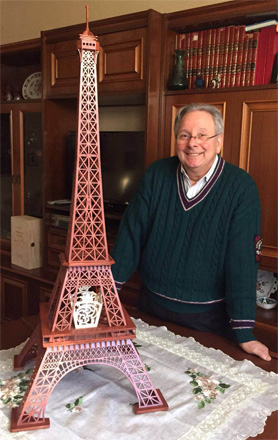 |
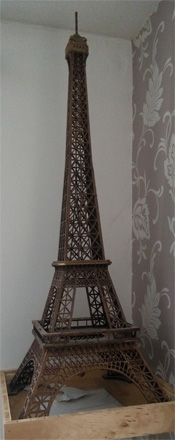 |
|
This picture has been kindly sent by Erika Maldonado from Ecuador. |
This picture has been kindly sent by Paolo Ponte from Milan, Italy. | This picture has been kindly sent by Stephen O'Toole from Ireland. |
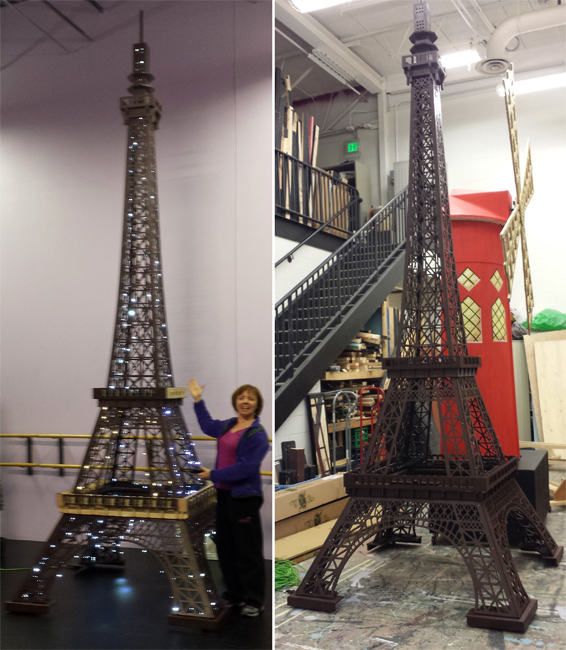 |
These pictures have kindly been sent by Todd LaHote from the USA: ¨I built one for my daughter's dance studio for a Paris themed competition dance they performed. The set also included a 10 foot long foot bridge between platforms and a hand cranked spinning Moulin Rouge 16 feet to top of the blades). This model about 15+ feet high, made out of 1/2 inch plywood on the first level, then 1/4 inch plywood for the rest. It comes apart into 16 separate pieces (four sides of first level. four sides of second level, third level single piece about 8 feet long, top cap, intermediate frames for the "platforms" between 1/2 and 2/3 which help connect it together, and 4 foot pads which have casters so it can be wheeled out on stage). There are 3 knob bolts along each of the corners of each section to hold it together, along with knob bolts to joint the sections, attach the foot pads, and the top cap. It assembles in under 10 minutes with two people. So far we have assembled and disassembled it about six times for various performances. |
|
I used your plans, expanded to something like 400% to print a pattern on paper. I cut out the holes with scissors, then taped the pattern onto the plywood and spray painted to show the areas to cut out. With a jig saw I cut the 1/2 stock and used a micro jig saw for the 1/4 stock. I only hand cut one half of one section, then I flipped that first piece on top of second uncut piece of plywood and used a 1/2 inch pattern cutting router bit (1/2 shank in a handheld router) for the 1/2 inch stock, and a micro pattern 1/4 inch router bit for the 1/4 inch stock to cut out the second piece. I then flipped the first piece over to rout the other half of the second piece, then used that fully cut second piece as a pattern to finish off the first piece, and rout pieces 3 and 4. It resulted in the corners being slightly rounded instead of sharp, but this was a stage prop and that was not noticeable from the audience. It was easier to rout than cutting each triangle by hand but very tedious as the micro bits are very fragile and had to rout really slowly. It was a lot of sawdust from the routing but still faster than precision hand cutting I learned a lot of things I would do different next time, but think this is a one of a kind for me. I had to significantly modify your second and third level platforms to make them functional to join sections of the tower together and transfer the weight load to the bottom section. I had to take some artistic liberty with those platforms and the top cap, both for construction purposes and because I was running low on certain materials and did not want to buy more. It is much more impressive in its scale than the pictures show. Thanks for your work in creating the pattern - it would have taken me forever to sort out the basic relative dimensions and grid lattice work. It was a hit with the dance studio and was definitely unique at the competitions. ¨ |
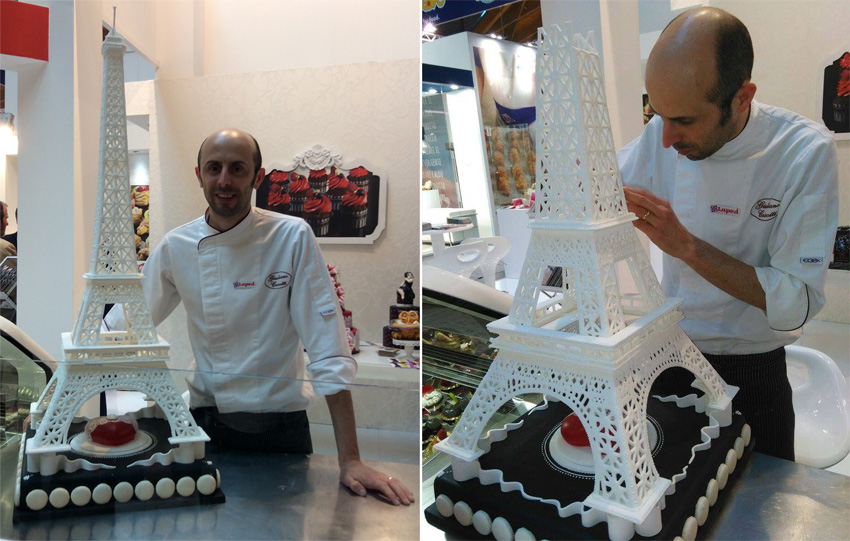 |
|
These pictures have been kindly sent by Giuliano Casotti from Italy. His Eiffel Tower is entirely made with sugar. |
 |
|
These pictures have been kindly sent by Roberto from Italy. You can also see this model in this video: http://youtu.be/x4PNMVguuCo |
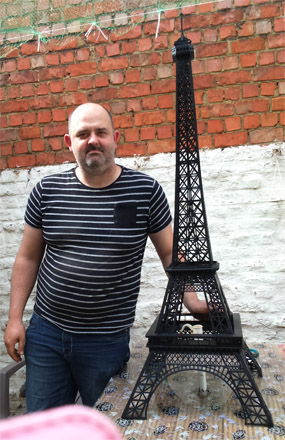 |
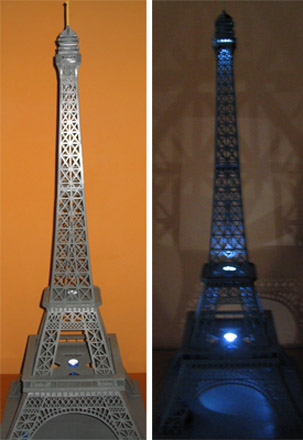 |
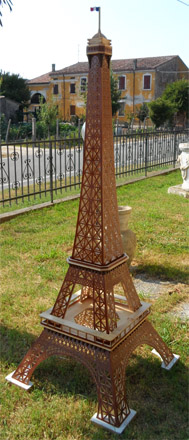 |
|
This picture has been kindly sent by Jurgen Willockx from Belgium. |
This picture has been sent by Mirco Ormelini from Italy. | This picture has been sent by Gaetano Lavezzo from Italy, showing a 150 cm tall model. |
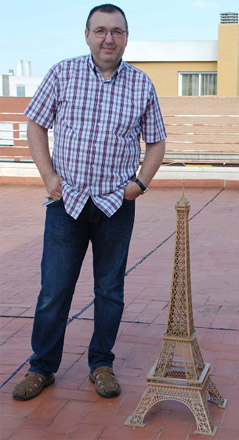 |
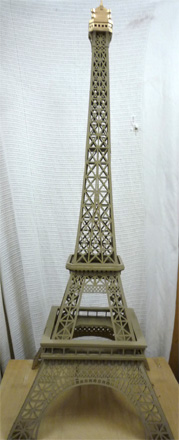 |
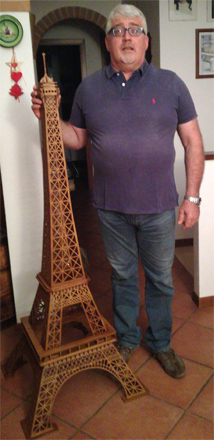 |
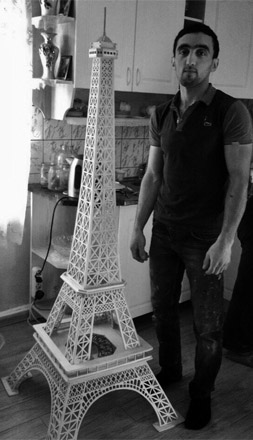 |
|
This picture has been sent by Guillermo Morcillo from Castellón, Spain. |
This picture has been sent by Brian Giles from the UK. | This picture has been sent by Stefano Canocchi from Italy. | This picture has been sent by Savelii Petanov from Germany. |
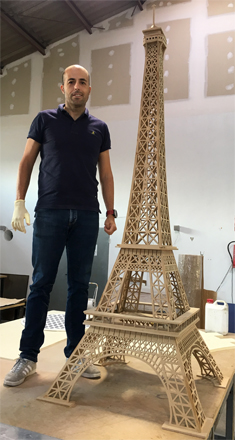 |
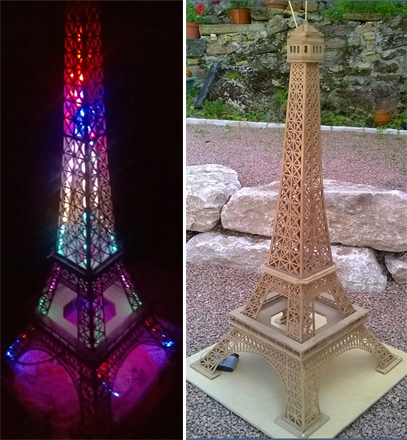 |
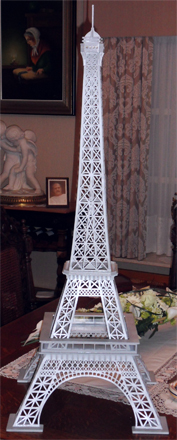 |
|
This picture has been kindly sent by Jorge Pitarch from Spain. |
These pictures have been kindly sent by Michel Tremeaud from France. | This picture has kindly been sent by Gino Rigole from Belgium. |
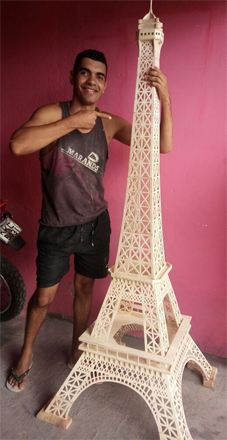 |
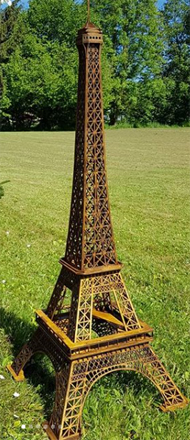 |
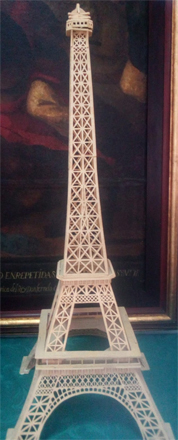 |
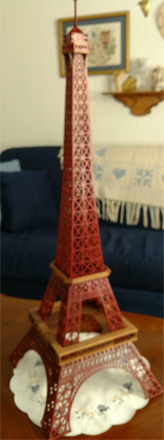 |
|
This picture has been kindly sent by Marcone Bezerra from Brazil. |
This picture has been kindly sent by Joël Souty from France.. | This picture has been sent by Antonio Serrano from Córdoba, Spain. | This picture has been kindly sent by Ken Ahrens from the USA. |
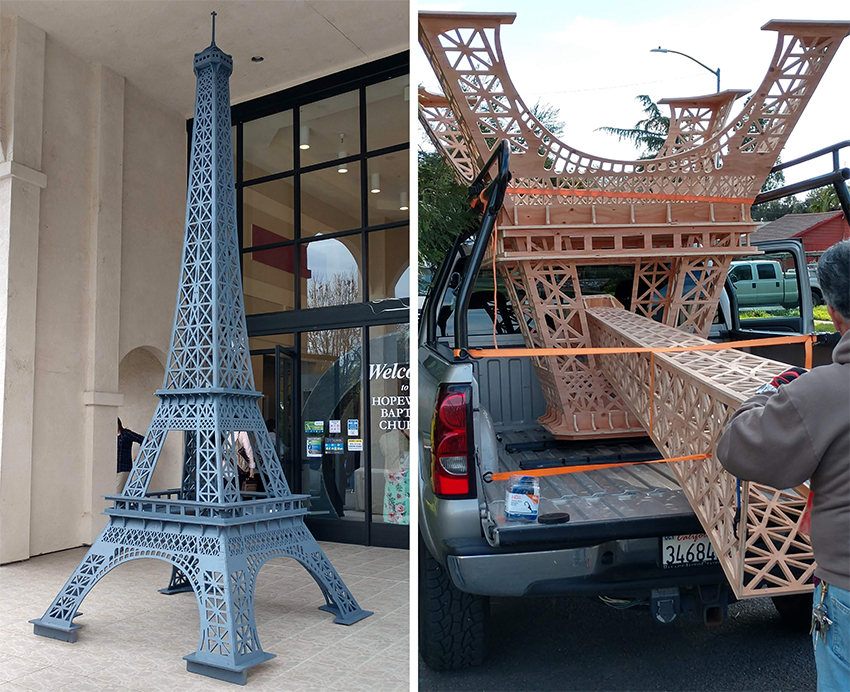 |
|
These pictures have been kindly sent by Ron Sloan from the USA. Observe the size of the model he has made. |
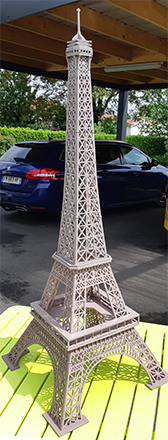 |
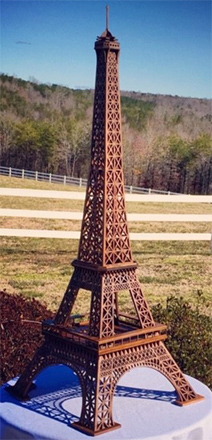 |
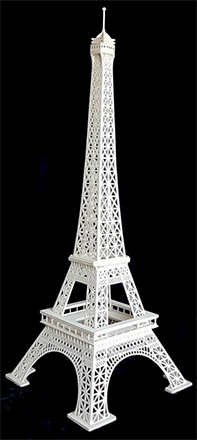 |
| This picture has been kindly sent by Joel Retailleau de France. | This picture has been kindly sent by Trevor Honosky from the USA. | This picture has been kindly sent by Jan van der Zee from the Netherlands. |
|
Site Map General: Home - Scroll saw examples - Free patterns 1 - Free patterns 2 - Free patterns 3 - Patterns for sale - Historical books - Shopping recommendations - Hegner review - Questions and answers - Links Scroll saw tutorials: Medusa box - Security box - Egg clock - Eiffel Tower - Sun clock - Washington box This site uses the cookies Doubleclick, Statcounter and Google Adsense to improve the user experience. You can delete these and all other cookies or to block its use from the options menu of your browser. Cookies are harmless text files used by all web sites. |
